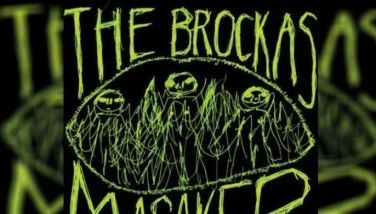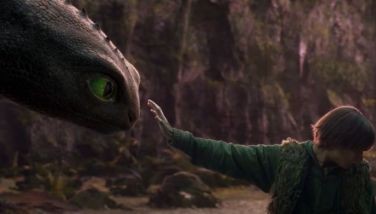The Wedding of Georg and Maria Von Trapp
MANILA, Philippines - December is the wedding-est month in the Philippines, though this traditional pledge of unity between a man and a woman is popularly held in June in the western hemisphere, as this month coincides with spring (the loveliest time of the year), after the stark and dreary winter, before the long, hot summer. Walking the aisle to a gossamer altar in the arms of a steadfast groom remains an aspiration for women all over the world, so Hollywood films cater to this female fantasy with yards of tulle and lace, fragrant bouquets, and lucullian banquets.
The silver screen has inscribed so many remarkable weddings in our memory, the Top 10 in recent memory from the surveys being: Four Weddings and a Funeral, The Graduate, My Best Friend’s Wedding, My Big Fat Greek Wedding, Father of the Bride (the original with Spencer Tracy and the remake with Steve Martin), Muriel’s Wedding, The Wedding Planner, The Wedding Singer, The Marrying Man and Runaway Bride. For me, the most romantic was the one of Captain Georg Ludwig Von Trapp and Maria, from the immortal The Sound of Music.
The Sound of Music (1959) originated as a musical composed by Richard Rodgers, with lyrics by Oscar Hammerstein II and a book by Howard Lindsay and Russel Crouse and based on the memoir of Maria Augusta Kutschera (Maria von Trapp), titled The Story of the Trapp Family Singers. It was the final collaboration of the two, as Hammerstein died of cancer nine months after the Broadway premiere. The original theatrical production, starring Mary Martin and Theodore Bikel, opened on Nov. 16, 1959 .
It was adapted by Century Fox into a movie in 1965 starring the young British film and stage actress, singer and later author Julie Andrews and the more mature Canadian theater, film and television actor Christopher Plummer. The whole world fell head over heels for this love story set in the milieu of the terrifying rise of Hitler’s Third Reich which plunged the world into a devastating war. Premiering in the US on March 2, 1965, it ultimately grossed over $158M at the US and Canada box-office and displaced Gone with the Wind as all-time box-office hit, eclipsed only later by the sci-fi saga, Star Wars. The film ran away with five Academy awards, including Best Picture.
I remember the time The Sound of Music was shown in Manila, when I was just in second grade and deemed too young to be brought to the big cinema in Azcarraga (Recto). I had the notoriety of getting nauseated on the long bus ride via the yellow La Mallorca from Calumpit to the city. Thus, it was our oldest, my only brother, whom our parents took with them. The market was inundated by all kinds of merchandising conceivable afterwards, and so we went to school lugging bags, lunch pails, notebooks, pencil cases with the spritely Maria in a billowing skirt, flinging to the Alpine chill her carpet bag and guitar in a case, with the Captain and the children in the background, and we can almost hear her clear soprano singing “Doe-a deer.†We memorized the waltz-time ritornello melody Edelweiss for special programs, believing it was Austria’s national anthem, when in fact, it was composed by Rodgers and Hammerstein especially for the movie.
Thus, when my husband and I took our first European adventure with Insight Tours arranged by our reliable travel manager, Raymond Tee of Horizons, we included Austria, concentrating on Vienna, Innsbruck and of course, the most beautiful city in the world for me, Salzburg. The Hollywood idyll on the fateful encounter of a young postulant to the Benedictine nunnery with the newly widowed navy captain, who employed her as a governess for his seven children, was filmed on location in the fourth largest city of Austria — Salzburg, in particular its “Old Town†(Altstadt), internationally renowned for its baroque architecture and one of the best-preserved city centres north of the Alps. It was listed as a UNESCO World Heritage Site in 1997. Salzburg is also the birthplace of 18th-century composer and prodigy, Wolfgang Amadeus Mozart.
Our tour manager, a prim and proper English lady, turned us over to our local guide, a militant Austrian who marched us in Gestapo fashion through Anif (Anif Palace), Mondsee, and Salzkammergut (Fuschl am See, St. Gilgen and Saint Wolfgang), Hohenwerfen Castle which served as the main backdrop for the song Do-Re-Mi and the Mirabell Gardens in Salzburg, where Maria and the children sang and danced around the horse fountain, using the steps as a musical scale. Our purple and green motor coach did a quick turn around the original Von Trapp Mansion by the lake, which is now a hotel.
The real wedding of Georg Ritter and Maria Augusta actually took place at the Nonnberg Abbey on Nov. 27, 1927. This formation house was founded ca. 714 by Saint Rupert of Salzburg and is the oldest women’s religious house in the German-speaking world. The building was largely destroyed in a fire of 1423. Reconstruction took place between 1464 and 1509. In 1624, the church was enlarged by the addition of three side chapels. A Baroque-style refurbishment took place in the 1880s. But the movie producers chose to film the nuptials in the twin-towered Mondsee Cathedral.
Mondsee Cathedral was once the heart of an important monastery and was founded in 748 A.D. on the ruins of a Roman settlement. It is one of the most important art treasures of Austria and in 2005, the cathedral received the title of a Papal Basilika minor. Despite the long and tiring tour that day, I climbed the hill where the citadel stood, just to get a glimpse of the marriage-made-in-heaven scene where Maria, led by Liesl, walked down the aisle to meet the captain in front of the main altar.
I can almost hear the piercing first bar of the two-minute bridal chorus from Richard Wagner’s opera, Lohengrin (Here Comes the Bride), from the pipe organ beside the ornate altar depicting the Annunciation of the Virgin Mary as I pressed my face on the filigreed steel bars of the side chapel. But in the movie, the Abbess and her coterie of old nuns sang a hymnal version of the facetious How do you solve a problem like Maria for the bridal processional.
We remember Julie’s lithe and winsome figure garbed in the traditional Western custom of the white wedding, in which a bride wears an immaculate gown with a serpentine train and long veil, as popularized by the wedding of England’s puritan Queen Victoria to her beloved German Prince Albert. In far-off times, the bride wore any color dress of her choice, with the royals usually opting for a silver one.
We also remember Christopher’s regally handsome figure in his navy gala uniform, with his inscrutable smile, as he waited for his bride in the altar. There was no indication then of the real feeling of this Shakespearean actor who, in his 2008 memoir, In Spite of Myself, rued the Von Trapp character as “humorless and one-dimensional.â€
“We tried so hard to put humor into it,†he wrote then. “It was almost impossible and was just agony to try to make that guy not a cardboard figure.†Thus was his dislike for the role that he declined to attend the 40th Anniversary cast reunion, but did provide commentary on the 2005 DVD release. However, for the film’s 45th anniversary, the octogenarian relented and appeared with the full cast in The Oprah Winfrey Show on Oct. 28, 2010.
In the special tribute, the “Big O†guested some grandchildren of the Von Trapps, launching a remastered video of the classic film. It was a delight seeing Julie and Christopher together again, having aged so gracefully. Once more, we played in our memory that epiphany scene by the gazebo when the Captain sang: So here you are standing there loving me/Whether or not you should, to which Maria responded: So, somewhere in my youth or childhood/I must have done something good. Georg and Maria then seal their vow with a tender kiss in the shadows as a prelude to their altar date.
In the Funfare e-mail interview recently done by editor Ricky Lo, Sofia, grand daughter of the youngest boy portrayed as Kurt (in reality, Werner Von Trapp), recounted singing Mozart’s The Magic Flute for their grandpa . The fourth generation Von Trapps, who are performing at Resorts World Manila on Dec. 5 and at Cebu Waterfront Hotel on Dec. 6, are reprising many of the songs from the movie, dressed in the Tyrolean costume of their forebears. Though our tour manager confided that there was a messy squabble over family inheritance after the death of their patriarch, we still insist on remembering this happy, musically gifted family whose legacy to the world is their fortitude against the vicissitudes of fortunes, forged in love and harmony by the union of Georg and Maria.
- Latest
- Trending































